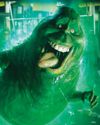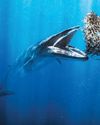
In October 2017, astronomer Robert Weryk saw a mysterious stick-shaped object with a faint reddish tint, located just 21 million miles from Earth (a relatively small distance in the vastness of space). He was using the Pan-STARRS1 telescope at the Haleakala Observatory in Hawaii, US, which looks for “near Earth” objects. This unexpected visitor was named ‘Oumuamua (say “oh-mu-ah-muah”), a Hawaiian word meaning “a messenger from afar arriving first”. It was the first known object from another solar system to visit our solar system, and the discovery raised many questions. Was this mysterious rock an asteroid, a comet, or perhaps something more extraordinary, like an alien spaceship?
This story is from the Issue 79 edition of The Week Junior Science+Nature UK.
Start your 7-day Magzter GOLD free trial to access thousands of curated premium stories, and 9,000+ magazines and newspapers.
Already a subscriber ? Sign In
This story is from the Issue 79 edition of The Week Junior Science+Nature UK.
Start your 7-day Magzter GOLD free trial to access thousands of curated premium stories, and 9,000+ magazines and newspapers.
Already a subscriber? Sign In

Camera Obscura
Imagine stepping inside a dark room, where the only source of light comes through one small hole in the wall.

MANCHESTER SCIENCE FESTIVAL
From 18-27 October, shoppers at the Arndale shopping centre in Manchester, England, will face a giant spider.

Are ghosts real?
Plenty of people believe in ghosts, but it's hard to find proof.

SMASH STEREOTYPES
In an extract from his prize-winning book, scientist and writer Adam Rutherford shows you how to use the power of science to fight racism. This chapter, titled Myth-Busting, is all about sport.

Big bum breakthrough
A team of researchers who found out that mammals can breathe through their bottoms have won a prize at the lg Nobel awards.

A jaw-dropping undersea snap
A photograph of a Bryde's whale feeding on a heart-shaped \"bait ball\" of sardines has won the Ocean Photographer of the Year contest.

First private spacewalk
On 12 September, billionaire Jared Isaacman completed the first-ever spacewalk by a nonprofessional astronaut.

Bat-like robot clings to tree
Researchers have developed a special robot that can fly into trees and cling on.

Teenager spots rare moth's eggs in UK
A teenager who became the first person to find the eggs of a rare moth in the UK has been nominated for a national award.

Sunflowers work as a team to share sunlight
Research has found that sunflowers move to avoid blocking each other's sunlight.